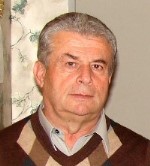Graphical analysis of the nonlinear functional relationship between team productivity and work difficulty
FEATURED PAPER
By Pavel Barseghyan
Texas and Armenia
ABSTRACT
The multi-parameter equations of state of project work contain all possible functional relationships between the system parameters of the project, obtaining which from the equations of state is one of the main tasks of the mathematical theory of project management.
The first part of the work was devoted to the qualitative analysis of the functional relationship between the productivity of the project team and the team size using graphical means.
The second part of the work is devoted to a qualitative analysis of the functional relationship between the productivity of the project team and the complexity or degree of difficulty of the project, taking into account the nonlinearity of this relationship.
The nonlinearity of this functional relationship is explained by the fact that both the members of the project team and the team as a whole have upper feasible limits of difficulties in their work.
INTRODUCTION
The activities of people involved in the implementation of projects of different scale and content can be viewed as a complex system, the quantitative description of which has the form of multi-parameter equations of state [1, 2].
As noted in the first part of the article, in the simplest case, the project activities of people can be represented by the following equation of state [3]
N * T * P = W * D (1)
The meaning of this equation is that if there is a project of size W and difficulty D, then for its implementation it is necessary to have a development team of N people who, working for a given period T, with productivity P, can successfully complete the project.
This is a deterministic interpretation of the meaning of the equation of state (1), which is the basis for understanding, using qualitative and quantitative approaches, the set of functional relationships that exist between the five system parameters of the project included in this equation.
The first part of the article, with qualitative approaches and graphical means, discussed the functional relationship between project team productivity P and team size N, for relatively small projects.
This constraint allows, when modeling the complexity of the project, to be satisfied with a simple two-parameter model, namely
Cd = W * D
, and a three-parameter model for the complexity Cs = N * T * P of human activities, which balances the complexity Cd of the project.
Since all the parameters in equation (1) are connected by functional relationships, it is sufficient that any of these parameters, say, the project size W or the value D of its difficulty, were changed for some reason to cause some changes in other parameters of the equation.
Accordingly, since the planning and implementation of projects is carried out under conditions of constant change, the knowledge of the mentioned inter-parametric functional relationships acquires a key meaning and significance in the process of project management.
The productivity of a project team depends not only on the number of people N, but also on many other factors, including the difficulty of the project work D, the size of the project W, the working atmosphere in the project team, the goals of the people, their motivation, the level of their professionalism, and others.
More…
To read entire paper, click here
How to cite this paper: Barseghyan, P. (2021). Quantitative analysis of the efficiency and productivity of the activity of human systems – Part 2: Graphical analysis of the nonlinear functional relationship between team productivity and work difficulty; PM World Journal, Vol. X, Issue IV, April. Available online at https://pmworldlibrary.net/wp-content/uploads/2021/04/pmwj104-Apr2021-Barseghyan-quantitative-analysis-of-efficiency-and-productivity-of-human-systems-part-2.pdf
About the Author

Pavel Barseghyan, PhD
Yerevan, Armenia
Plano, Texas, USA
![]()
![]()
Dr. Pavel Barseghyan is a consultant in the field of quantitative project management, project data mining and organizational science. Has over 45 years’ experience in academia, the electronics industry, the EDA industry and Project Management Research and tools development. During the period of 1999-2010 he was the Vice President of Research for Numetrics Management Systems. Prior to joining Numetrics, Dr. Barseghyan worked as an R&D manager at Infinite Technology Corp. in Texas. He was also a founder and the president of an EDA start-up company, DAN Technologies, Ltd. that focused on high-level chip design planning and RTL structural floor planning technologies. Before joining ITC, Dr. Barseghyan was head of the Electronic Design and CAD department at the State Engineering University of Armenia, focusing on development of the Theory of Massively Interconnected Systems and its applications to electronic design. During the period of 1975-1990, he was also a member of the University Educational Policy Commission for Electronic Design and CAD Direction in the Higher Education Ministry of the former USSR. Earlier in his career he was a senior researcher in Yerevan Research and Development Institute of Mathematical Machines (Armenia). He is an author of nine monographs and textbooks and more than 100 scientific articles in the area of quantitative project management, mathematical theory of human work, electronic design and EDA methodologies, and tools development. More than 10 Ph.D. degrees have been awarded under his supervision. Dr. Barseghyan holds an MS in Electrical Engineering (1967) and Ph.D. (1972) and Doctor of Technical Sciences (1990) in Computer Engineering from Yerevan Polytechnic Institute (Armenia).
Pavel’s publications can be found here: http://www.scribd.com/pbarseghyan and here: http://pavelbarseghyan.wordpress.com/. Pavel can be contacted at terbpl@gmail.com
To view other works by Dr. Barseghyan that have been published in the PM World Journal, visit his author showcase in the PM World Library at https://pmworldlibrary.net/authors/dr-pavel-barseghyan/









